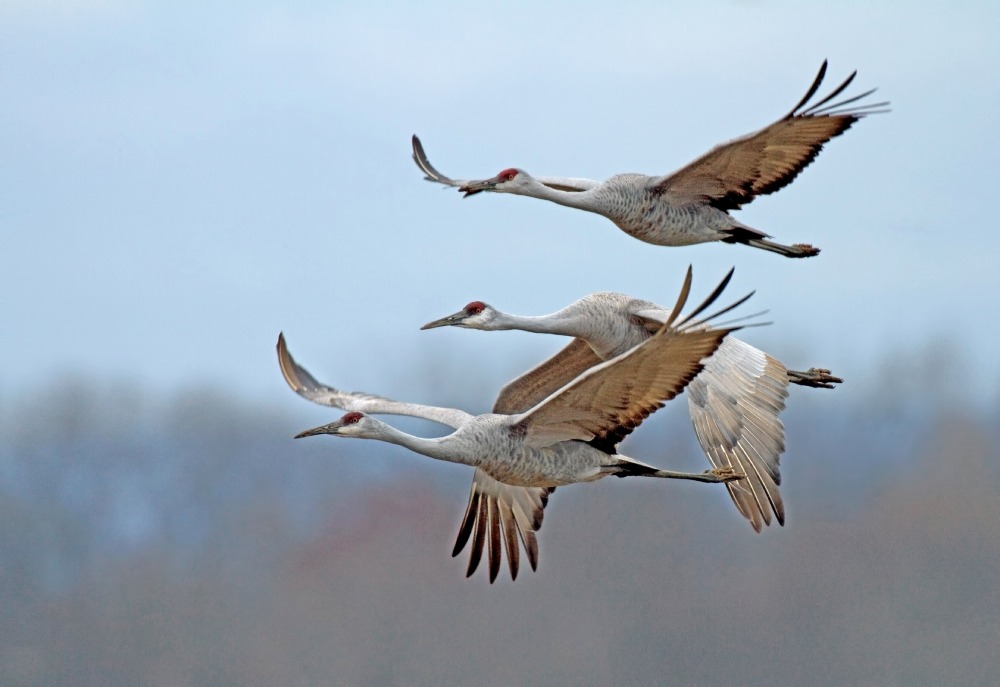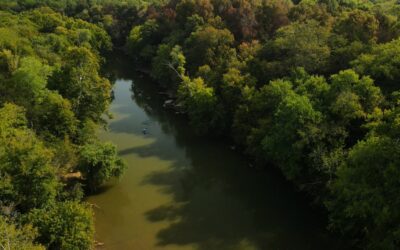Tennessee establishes a hunting season for sandhill cranes
According to the biologists at the U.S. Fish and Wildlife Service, the Eastern Population of sandhill cranes have grown to huntable numbers. Just 20 years ago, sandhill cranes were severely threatened.
This is another tremendous success story for wildlife in America.
Today, tens of thousands migrate down the Mississippi Flyway. As with most large waterfowl migrating in great numbers—such as the snow goose—they can quickly decimate agricultural crops.
When the Tennessee Fish and Wildlife Commission took up the prospect of a limited sandhill crane season in 2011, emotions were running high in certain circles. Folks who enjoy watching birds wonder why, now that the sandhills have been restored to healthy numbers, should we hunt these majestic birds?
We at Tennessee Wildlife Federation are wildlife lovers too—birdwatchers, conservationists, and hunters. Our Board of Directors voted unanimously to support Tennessee’s sandhill crane hunting season, and here’s why.
Consider the white-tailed deer, the Eastern wild turkey, the snow goose and, more recently, the elk—all species that have been threatened with extinction here in the last half-century. With the support of Tennessee Wildlife Federation and the Tennessee Wildlife Resources Agency, all of these species have been returned to healthy, huntable numbers.
The end goal is not hunting, per se; hunting is a management tool that also provides a wonderful opportunity for people to get outdoors, spend time together as families, be a part of and observe the natural world, and put food on the table.
Instead, hunting is the exclamation point on another wildlife success story. When a species’ population is to the point where it can support hunting—and certainly where it relies on hunting for population control—that is undoubtedly a tremendous success.
Sandhill cranes have been hunted as long as humans have been chasing food, certainly in North America as far back as the historical record goes. They are among the best eating waterfowl available.
Addressing Concerns
They are a distinctive bird. Many have expressed concerns that threatened whooping cranes could be taken accidentally, but the whooper is nearly twice as large, is white versus the dark gray of the sandhill, and the calls of the two birds are markedly different. Even juvenile whoopers, with their splotchy brown coloration, would be difficult to misidentify with a sandhill. Juvenile whooping cranes don’t fly until they are 80–90 days old, they begin developing adult (white) plumage at around four months of age, and they don’t separate from their parents until the northward migration, which is much later than hunting season. The “misidentification” argument simply doesn’t hold water.
Besides, waterfowlers pride themselves on species identification, if only for the necessities of legality. Species like the pintail and the canvasback and have been restricted or not allowed in recent years, and to accidentally take one carries a heavy penalty. People who break wildlife laws can have their vehicles, boats, and other equipment seized; lose their hunting privileges for years or for life; and pay financial penalties that can run up to several thousand dollars.
Despite active sandhill hunting seasons in a dozen states, a quick Google search finds only one case of a whooping crane being taken during sandhill season. It was in Kansas, in 2003, when a group of seven sandhill crane hunters was formally charged under the Migratory Bird Treaty Act with killing two whooping cranes. The Act carries a maximum fine of $15,000 and 6 months in jail. Through plea agreements, each hunter had to pay a $3,000 fine, collectively pay $2,587 restitution for the veterinary bills for care of the injured birds, perform 50 hours of community service at a local waterfowl refuge, pass a hunter education course, and lose hunting privileges for two years.
Healthy Populations for Outdoor Recreation
The fact is, waterfowlers and birders have the same goal: healthy populations that we can all enjoy. The waterfowl season runs 60 days in Tennessee, but many hunters spend the rest of the year preparing crops for migrating birds, photographing them, and just generally enjoying watching them in their natural habitat. Many of us are backyard birders, too.
Tennessee Wildlife Federation was a partner in the inaugural Sandhill Crane Viewing Days at Hiwassee Refuge, and has been a major sponsor over the years. This is a great wildlife opportunity, and we believe it’s important to the state.
The biologists at the U.S. Fish and Wildlife Service have recommended a season in Tennessee because the science supports it, and history has shown that waterfowl hunting and birdwatching can co-exist without either negatively impacting the other. In fact, it’s worked fine for every other species of waterfowl that is both hunted and viewed.
Science-Based Management
Humans have always been a part of nature, and a fixture at the top of the food chain. As we have encroached upon the natural world, it has long been important to regulate hunting and maintain healthy interactions. But anyone who spends time observing the natural world understands that emotion has no place in decision-making with regards to wildlife.
Tennessee Wildlife Federation’s position was to let the wildlife biologists make the best decisions for wildlife based on the science. Judging by their track record of success in restoring threatened species, we owe it to them to follow their recommendations.
The Commission studied the issue for two years, and in 2013 passed Tennessee’s first sandhill crane season. A limited number of tags will be issued at a live draw at the Hiwassee Refuge, and hunters will have to pass a crane identification course before going afield.
We believe this was the right decision, and that sandhill cranes will continue to be a plentiful resource enjoyed and utilized by all users for generations to come.
Featured photo by Bob Howdeshell




